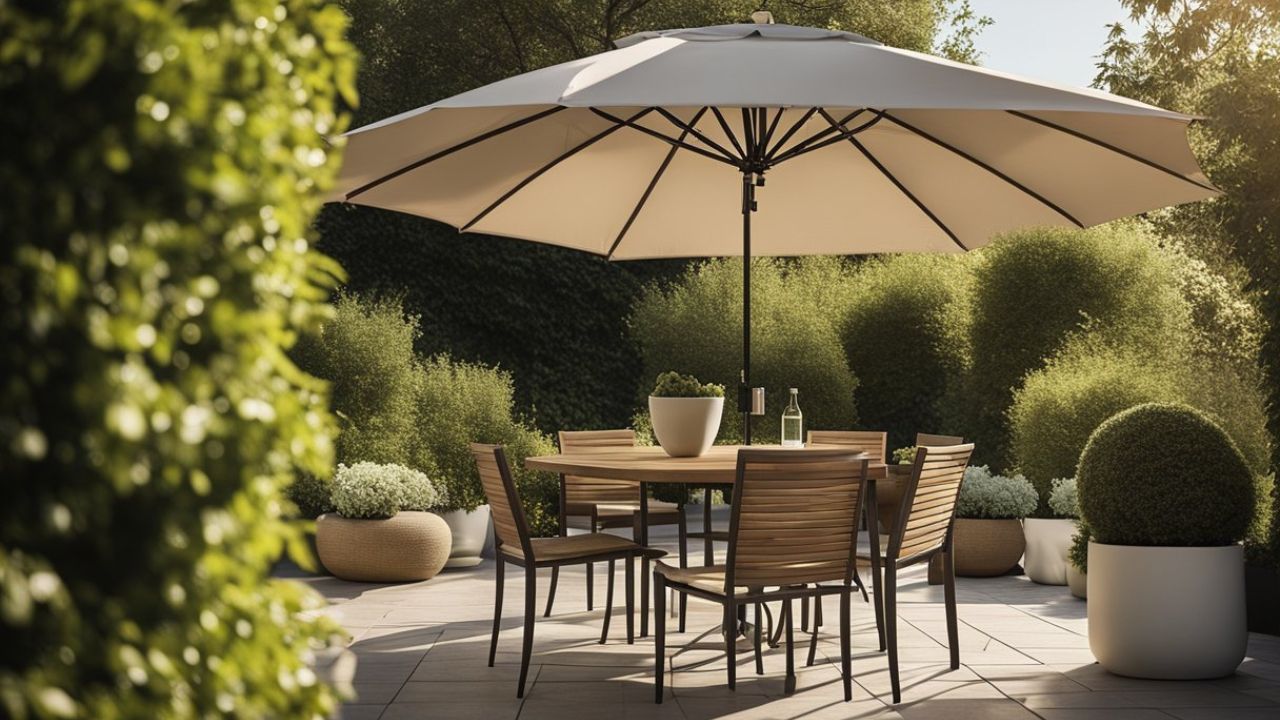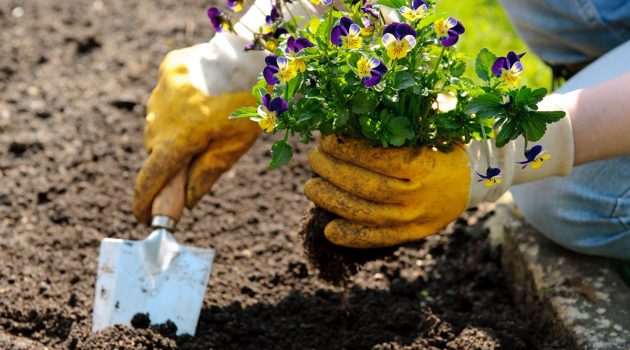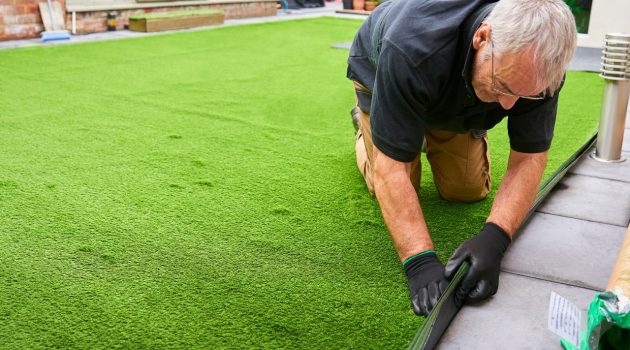Creating artificial shade in your home garden can be a game-changer for the health and well-being of your plants.
With the hot sun bearing down on your greenery, finding ways to protect them from scorching heat and potential sun damage is essential.
By implementing a few methods of creating shade, you’ll help your plants grow strong and healthy, even during the warmest months of the year.
There are several approaches to creating artificial shade, each with its unique benefits and aesthetic charms.
From stylish patio umbrellas to practical shade cloths, finding the right option for your garden can be enjoyable when you explore the different possibilities.
It’s important to keep in mind the specific needs of your plants and the general layout of your garden to ensure the most effective outcome.
Remember, shade not only offers protection from sunburn, but it can also contribute to your garden’s overall appearance and enjoyment.
With a thoughtful and well-planned approach, your garden will be an inviting, cool sanctuary where both the plants and you can escape the heat.
1. Shade Cloth
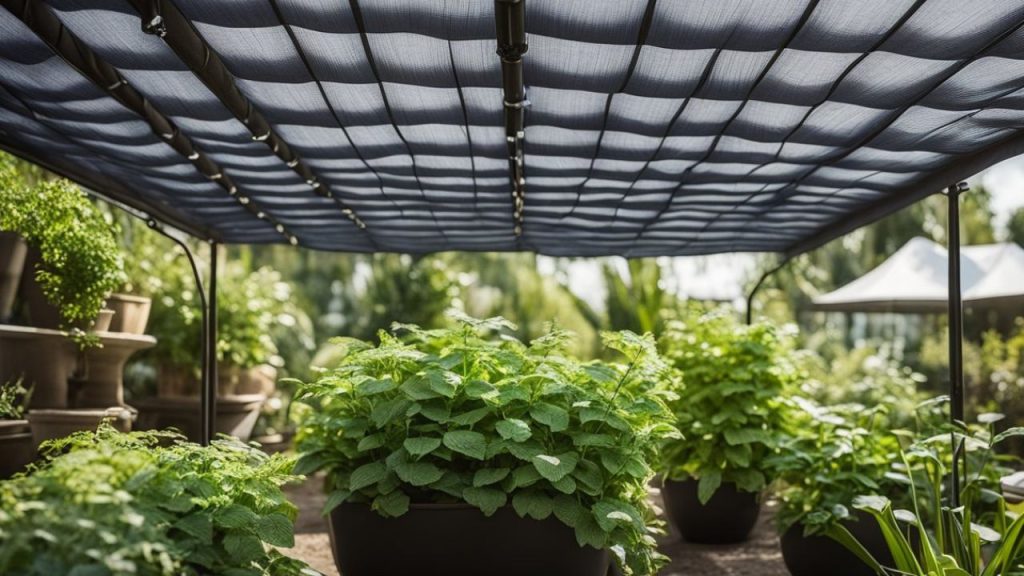
Shade cloth can be a gardener’s best friend when it comes to providing your crops, herbs, and other plants with some much-needed respite from the harsh sun exposure.
A versatile and readily available option, shade cloth comes in various degrees of shading (e.g., 30%, 50%, 70%) and can be easily draped over structures or supported by frames.
You can create a lovely haven for your garden by attaching the shade cloth to pergolas, trellises, or other garden structures.
Not only does this help protect your plants from potential sunburn, but it also adds a touch of privacy and charm to your outdoor spaces.
Using the right shade cloth density is crucial, as too much or too little shade can affect your plants’ growth.
For instance, sun-loving vegetables and herbs may need help under a 90% density shade cloth, while shade-loving plants like cabbage or chives might only survive with a 10% shade cloth.
2. Pergolas and Arbors
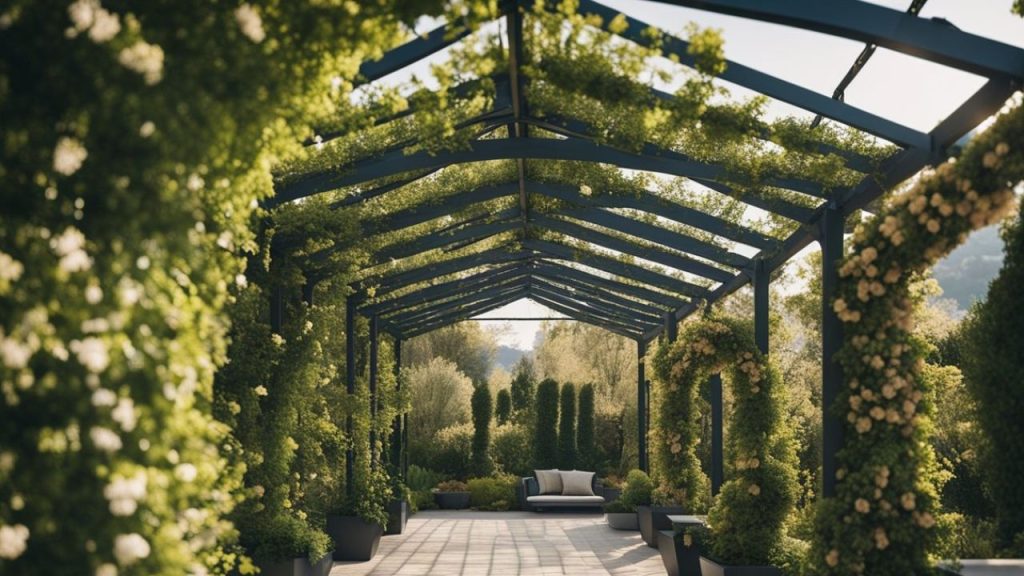
Adding a pergola or arbor to your garden can enhance your outdoor space’s aesthetic appeal and functionality.
These structures create attractive focal points and provide partial shade, making your backyard or patio more comfortable.
To further improve the shade your pergola or arbor provides, consider planting climbing vines or flowers, such as climbing roses, wisteria, or bougainvillea.
As these plants grow and cover the structure, they’ll create a naturally shaded area below, perfect for relaxing on a sunny day or hosting gatherings.
Remember, the location of your pergola or arbor within your garden or on your deck will impact the amount of shade it provides.
Consider strategically positioning it to maximize its shading potential while enhancing your landscape design.
3. Umbrellas and Shade Sails
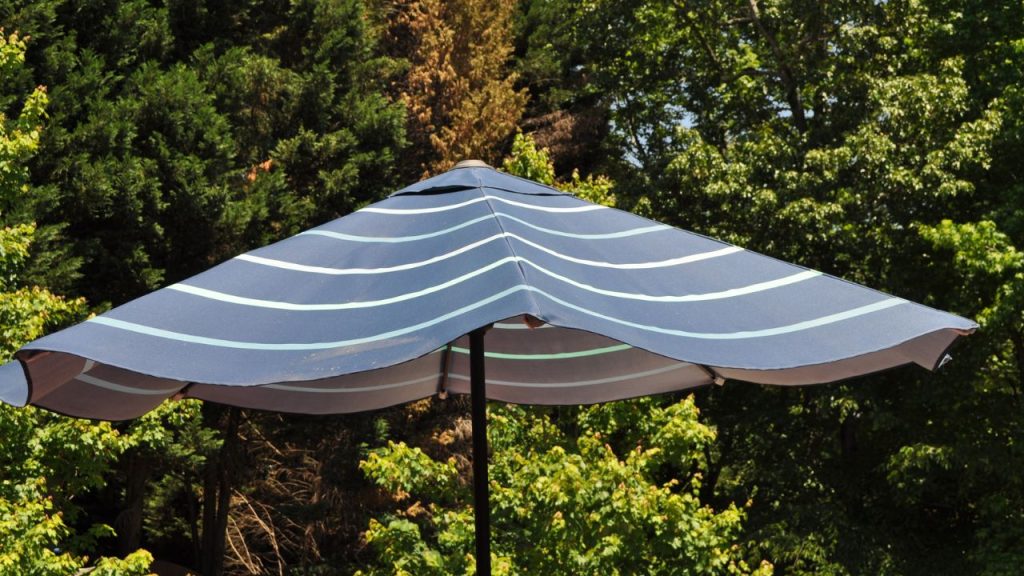
Creating a comfortable outdoor space in your home garden is easy with patio umbrellas and shade sails.
These mobile options are perfect for providing temporary shade to seating areas or potted plants that need protection from the sun.
Patio umbrellas are popular, available in various colors and designs to suit your garden’s aesthetic.
They offer shade from sunlight and can also be used for protection against light rain. Installing a patio umbrella is simple – insert it into a weighted base for stability.
Shade sails provide a modern touch to your garden. These flexible shade sail canopies are available in various colors and can be customized to fit any space.
To set up, secure the corners of the shade sail to sturdy, anchored points in your garden.
These options not only offer functional benefits, but also enhance the visual appeal of your outdoor space.
4. Shade Trees

Planting shade trees in your garden is a great long-term solution for creating a comfortable outdoor space.
As these trees grow and mature, they can provide excellent natural shade, protecting your landscape from direct sunlight, and offering privacy as well.
Some popular shade trees are oaks, maples, and willows. Keep in mind that it requires patience, as these trees take several years to grow to maturity.
Despite the time investment, shade trees offer many benefits for your outdoor spaces.
Their impressive size can also enhance your garden’s aesthetics, supporting a healthy and beautiful environment.
READ MORE: How To Keep Your Garden Always Green
5. Hedge or Shrub Borders
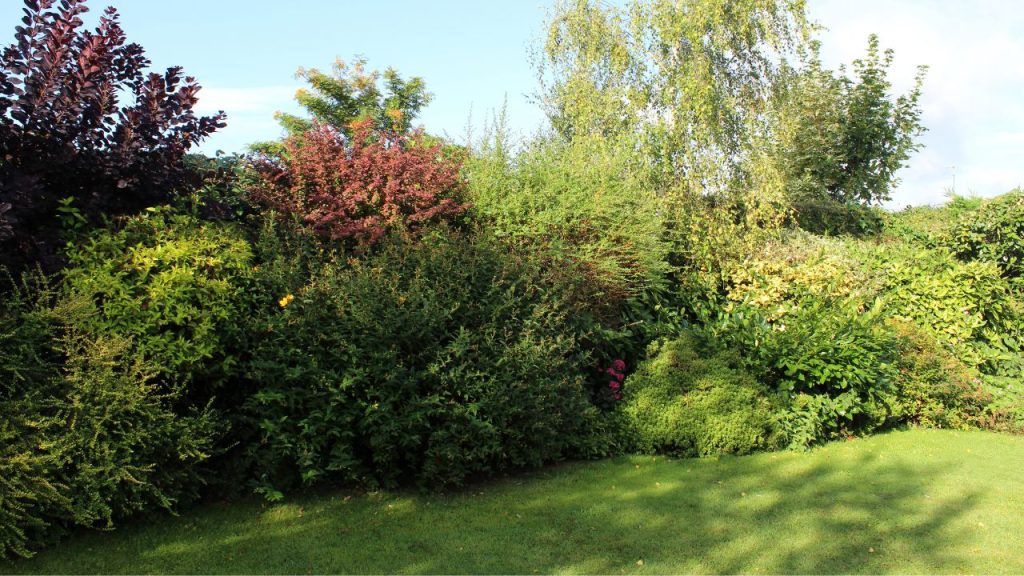
Planting tall hedges or shrubs around the perimeter of your garden can provide a natural shade barrier.
By selecting dense, evergreen varieties, you’ll ensure year-round coverage and privacy for your outdoor space.
One option you might consider is the Privet hedge, which boasts dense foliage and lovely scented white flowers in the summer, later turning into purple-black berries in the fall.
Japanese holly, also known as sky pencil, is another evergreen shrub that thrives in shady areas and can be shaped into a topiary or hedge.
To create a visually appealing landscape, feel free to mix evergreen and flowering shrubs for a lush greenery display.
These shrubs won’t only provide shade but also improve the overall aesthetic appeal of your garden.
6. Container Plants
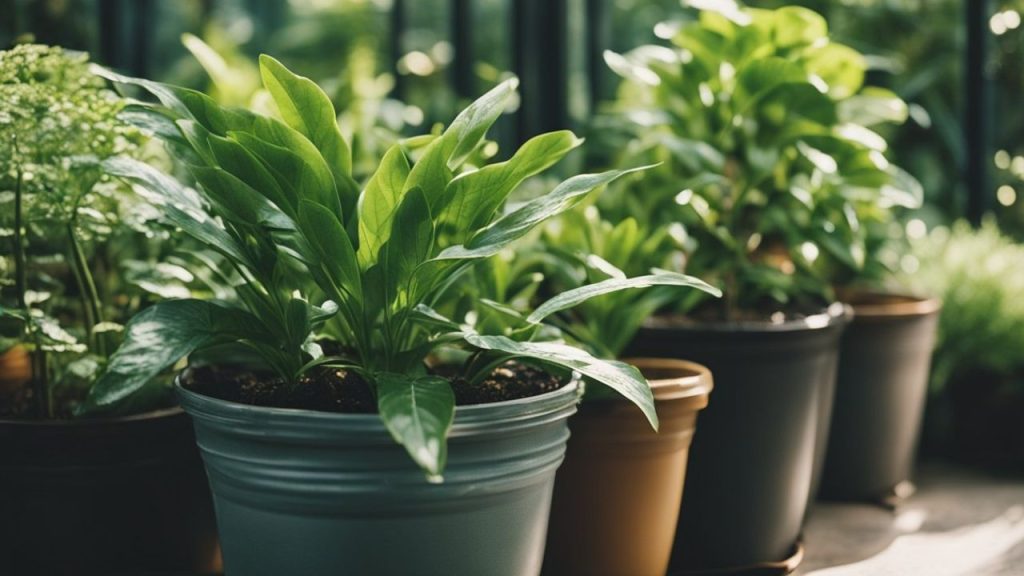
Creating artificial shade in your home garden is simple with the help of container plants.
Select shade-loving plants like coleus, begonia, and lily of the valley to thrive in those areas with little direct sunlight.
You can pot these plants in containers that suit your aesthetic preferences as a gardener.
Using containers offers flexibility, allowing you to move plants around your garden and adjust their position as needed.
Place larger potted plants strategically to cast shade on smaller plants or delicate herbs that may benefit from some protection from the sun.
Remember to choose plants with similar moisture and light requirements when creating your container combinations.
This will make it easier to maintain your mini shade garden and provide an enjoyable experience for both you and your plants.
7. Bamboo Screens
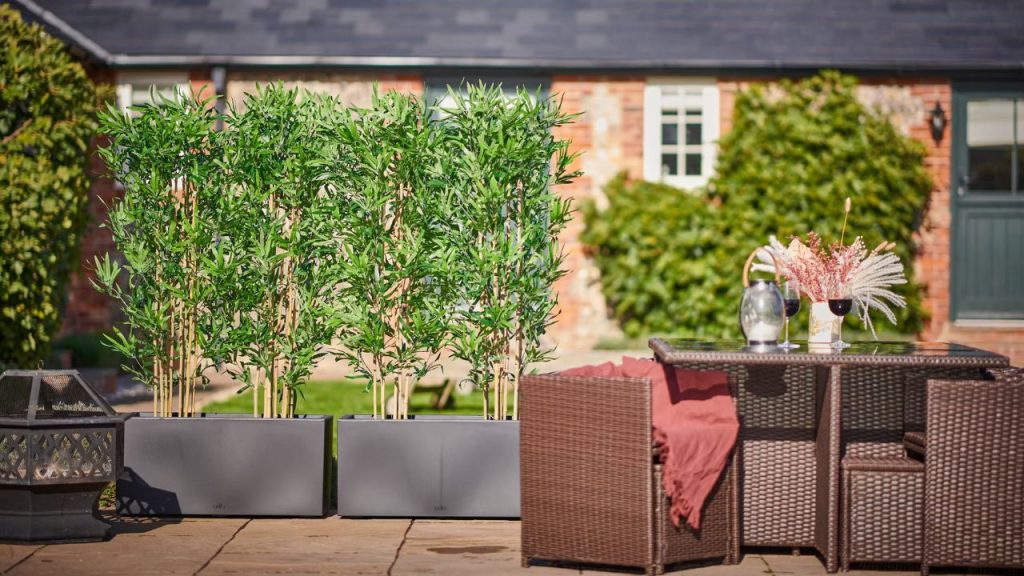
Bamboo screens can be a visually appealing and natural way to create artificial shade in your home garden.
Not only do they provide privacy, but they can also transform your backyard into an inviting outdoor space.
Planting bamboo in containers can help you control its growth, preventing it from spreading uncontrollably.
Placing bamboo screens around your deck or fence can effectively block sunlight, create a cozy atmosphere, and add an Asian design touch to your garden.
Consider using fast-growing bamboo to create screens, fences, and even ceilings in your outdoor areas for a simple and eco-friendly solution.
These screens not only enhance the beauty of your garden, but can also be paired with strategically placed potted plants for a more distinctive look.
8. Outdoor Curtains
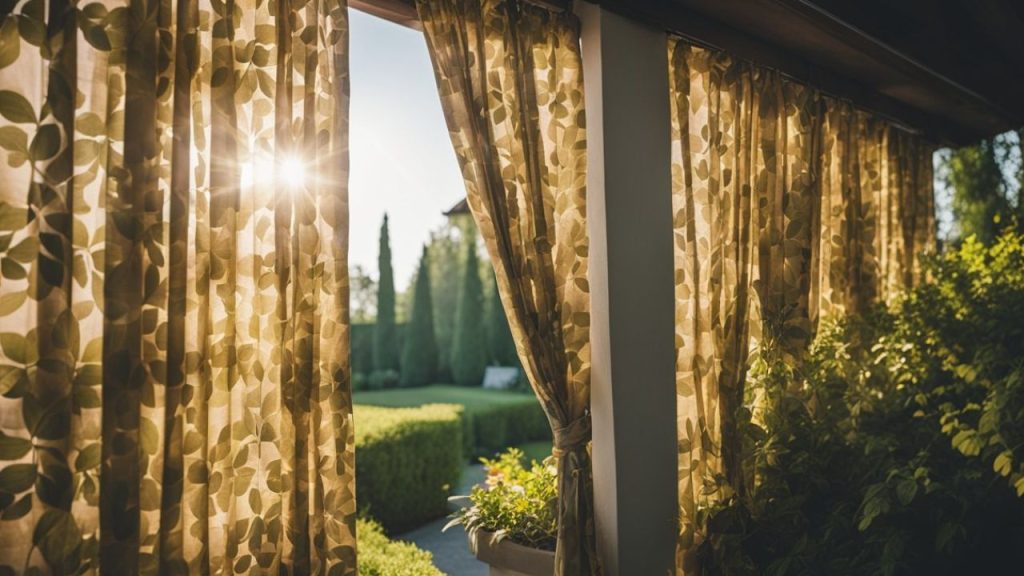
Installing outdoor curtains or drapes on a pergola or other structure in your garden can be an excellent way to create shade and add a touch of elegance.
Not only do they protect from the sun, but they also offer an added layer of privacy to your outdoor space.
Choosing the right curtains for your garden is important. Opt for weather-resistant materials like cotton canvas or polyester to ensure their durability and longevity.
Moreover, select a color and pattern that complements your garden’s style and ambiance.
Consider installing an awning on your deck or patio alongside the curtains for extra shade and coverage.
This combination will help transform your garden into a cozy and inviting space where you can enjoy the outdoors comfortably, even on the sunniest days.
READ MORE: Beautiful Flower Combinations for Your Garden
9. DIY Shade Structures
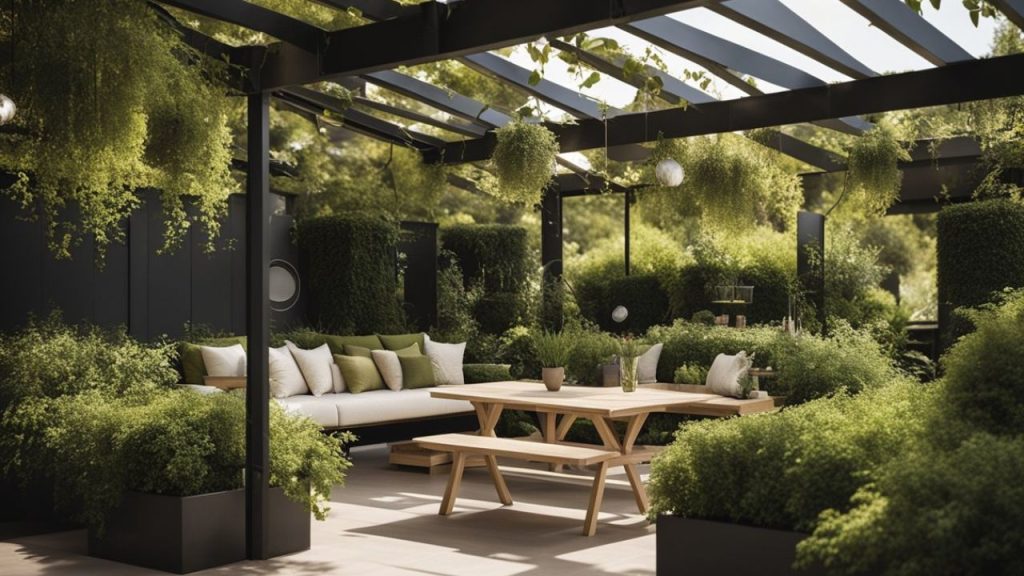
Creating artificial shade in your home garden can be both budget-friendly and efficient.
Utilizing materials like wood or PVC pipes, you can build your own DIY shade structures to fit the specific needs of your garden.
There are various options, such as a gazebo, awning, or shade sails.
A popular choice for backyard, patio, or deck is a shade sail. These structures provide ample shade with easy installation.
They can be secured to existing structures, poles, or even trees. These sails are available in different sizes, shapes, and colors to suit your garden aesthetic.
Another option is building a simple gazebo in your garden. You can follow step-by-step instructions found online to construct a gazebo that suits your space.
This could become a source of shade and a charming focal point of your outdoor area.
10. Trellises and Lattice
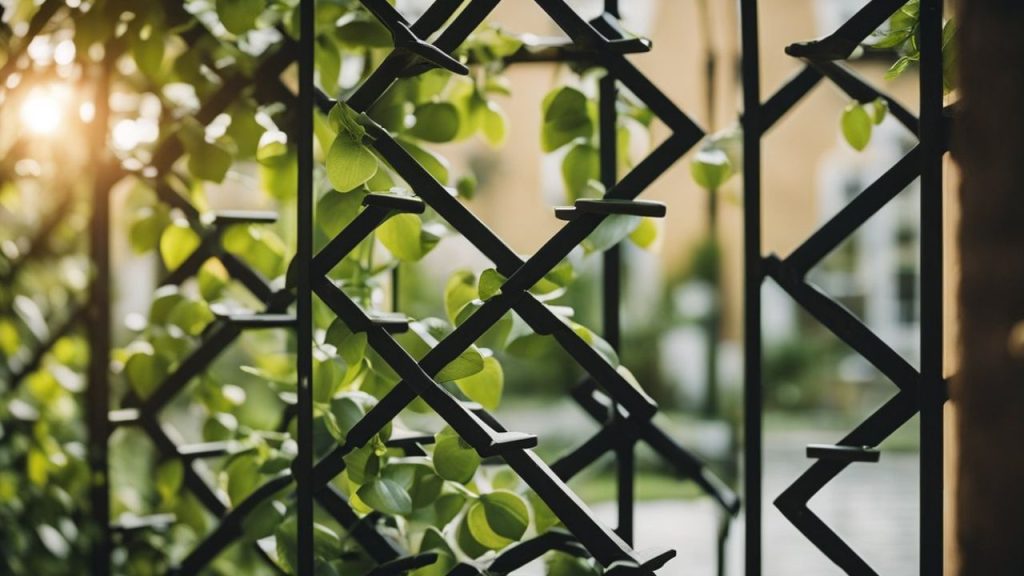
You can easily create artificial shade in your garden by installing trellises or lattice panels.
They’re perfect for supporting climbing plants like roses, honeysuckle, clematis, wisteria, and vines.
As the plants grow and cover the structure, a welcoming shade is formed, protecting your garden from direct sunlight.
To get started, pick a trellis design that suits your garden’s aesthetics and the plant species you plan to grow. Consider the need for airflow and sunlight while selecting the design.
Once installed, plant your chosen climbing plants like peas, wisteria, or roses near the base of the trellis.
As the new plant friends grow, they’ll gracefully climb the trellis or lattice, creating a vibrant green canopy that offers respite from the sun.
With trellises and lattice, you’ll not only enhance the beauty of your garden but also create a pleasant, refreshing shade for you to relax in.
So, go ahead and explore these lovely additions to your home garden.
